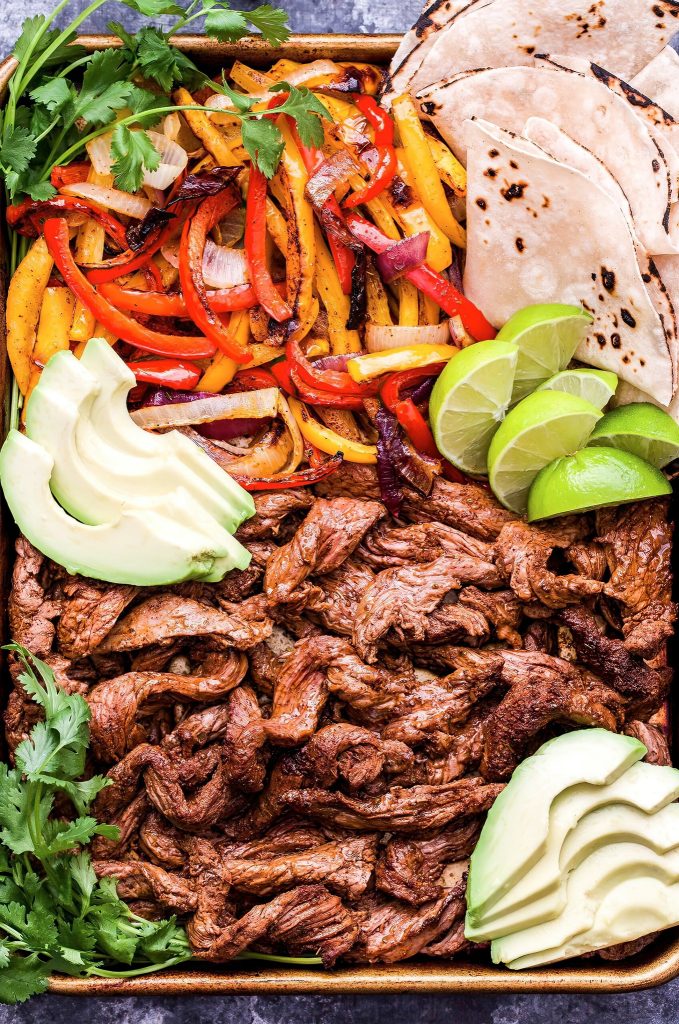Steak fajitas, a sizzling Tex-Mex classic, perfectly combine the richness of tender, marinated steak with the vibrant flavors of colorful bell peppers and onions. This dish is a symphony of textures and tastes, where each bite is a fiesta in your mouth. Let's delve into the backstory, ingredients, and cooking techniques that make steak fajitas an irresistible favorite for gatherings or weeknight dinners.
The Origins of Steak Fajitas
A Glimpse into History
The origins of steak fajitas trace back to the ranch lands of West Texas, where Mexican cowboys, known as vaqueros, cooked strips of skirt steak over an open flame. Traditionally, these flavorful strips were considered a humble and inexpensive cut of meat. Over time, this simple yet delicious dish made its way into American restaurants, gaining popularity for its bold and zesty flavors.
The Heart of the Recipe: Ingredients and Flavors
Marinated Skirt Steak
The star of steak fajitas is undoubtedly the marinated skirt steak. This cut, when properly marinated and cooked, becomes tender and juicy, bursting with smoky and savory notes. The marinade, typically a blend of lime juice, garlic, cumin, and chili powder, infuses the meat with layers of flavor, taking it from ordinary to extraordinary.
Vibrant Bell Peppers and Onions
The colorful trio of bell peppers—red, green, and yellow—and sweet onions add a delightful crunch and sweetness to the dish. When sautéed alongside the steak, they caramelize slightly, enhancing the overall flavor profile. The peppers and onions also bring a pop of color to the fajitas, making them visually appealing and appetizing.
Seasonings and Spices
To elevate the dish further, a blend of spices such as chili powder, cumin, smoked paprika, and a touch of cayenne pepper is often used to season the steak and vegetables. These spices add warmth, depth, and a hint of heat, creating a harmonious balance of flavors that dance on your taste buds with each bite.
Cooking Techniques: Bringing It All Together
Searing the Steak
One crucial step in making perfect steak fajitas is achieving a good sear on the marinated skirt steak. Searing locks in the juices and creates a flavorful crust on the outside while keeping the inside tender and juicy. Whether you're using a grill, cast-iron skillet, or broiler, a hot cooking surface is key to achieving that desired caramelization.
Sautéing the Peppers and Onions
The art of sautéing the bell peppers and onions lies in cooking them until they are tender-crisp, bringing out their natural sweetness. This process adds a depth of flavor to the fajitas and ensures that the vegetables retain their vibrant colors and textures. Be mindful not to overcook them to maintain their freshness and crunch.
Assembly and Serving
Once the steak is cooked to perfection and the peppers and onions are tender, it's time to assemble the fajitas. Warm up some soft flour tortillas, pile on the steak strips, peppers, and onions, and serve with your favorite toppings like guacamole, salsa, sour cream, and fresh cilantro. The beauty of steak fajitas lies in customizing each fajita according to your preferences, adding a personal touch to every bite.
Frequently Asked Question: Can I Use a Different Cut of Meat?
If skirt steak is not readily available, you can substitute it with flank steak or sirloin steak. While these cuts may have a slightly different texture, they work well in fajitas when sliced thinly against the grain. Marinating the meat will help tenderize it, ensuring a flavorful and enjoyable eating experience.
Conclusion: A Festive Feast for All
Indulge in the sensory delight of steak fajitas, where tender steak, colorful peppers, and onions come together in a harmonious symphony of flavors. This dish is not just a meal; it's a celebration—a burst of Tex-Mex flair that brings joy to every gathering. So, gather your loved ones, fire up the grill, and savor the magic of homemade steak fajitas. Let the sizzle and aroma transport you to a culinary fiesta where every bite is a moment to relish. Cheers to creating memories and flavors that linger long after the last fajita is devoured!


